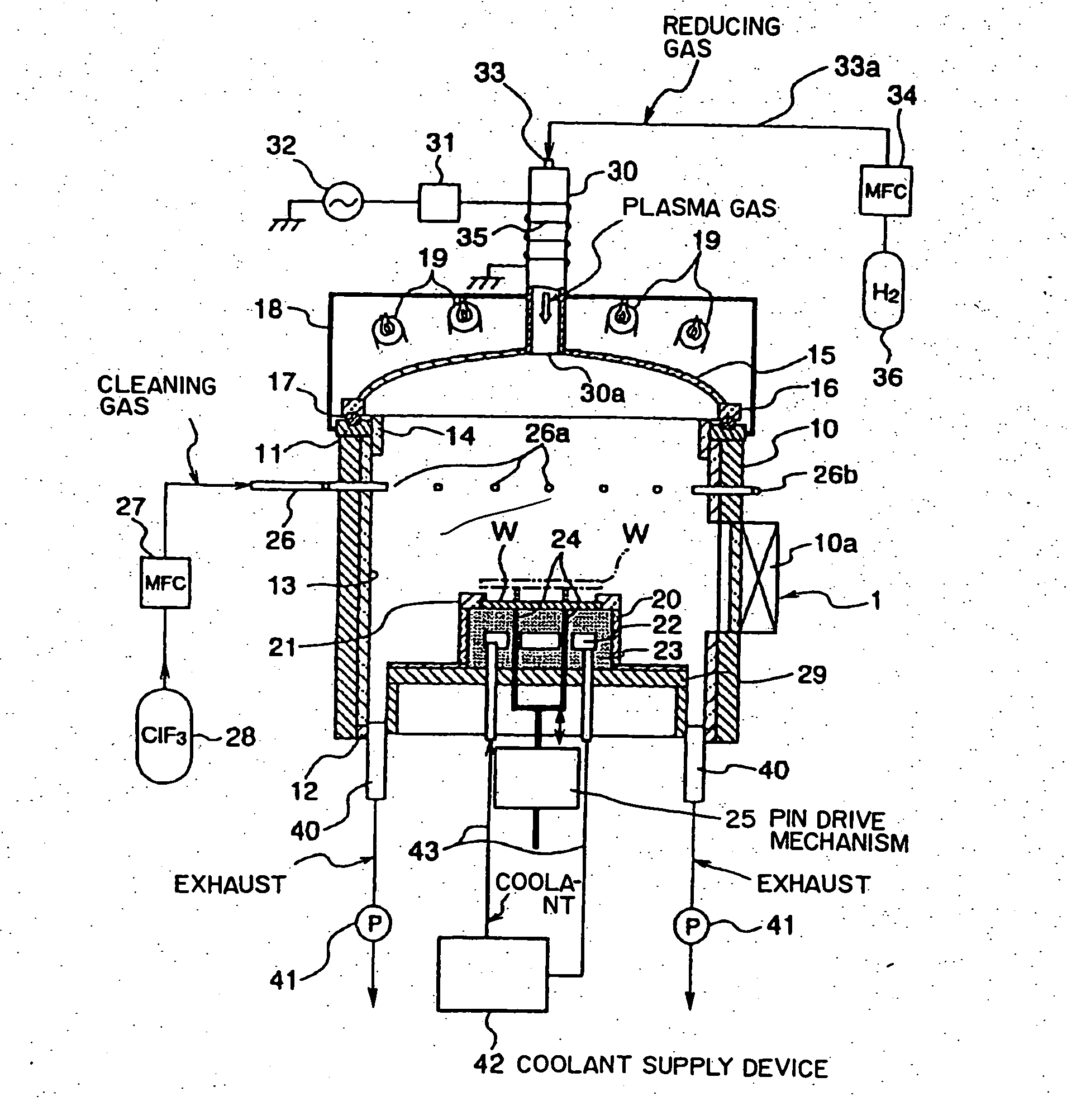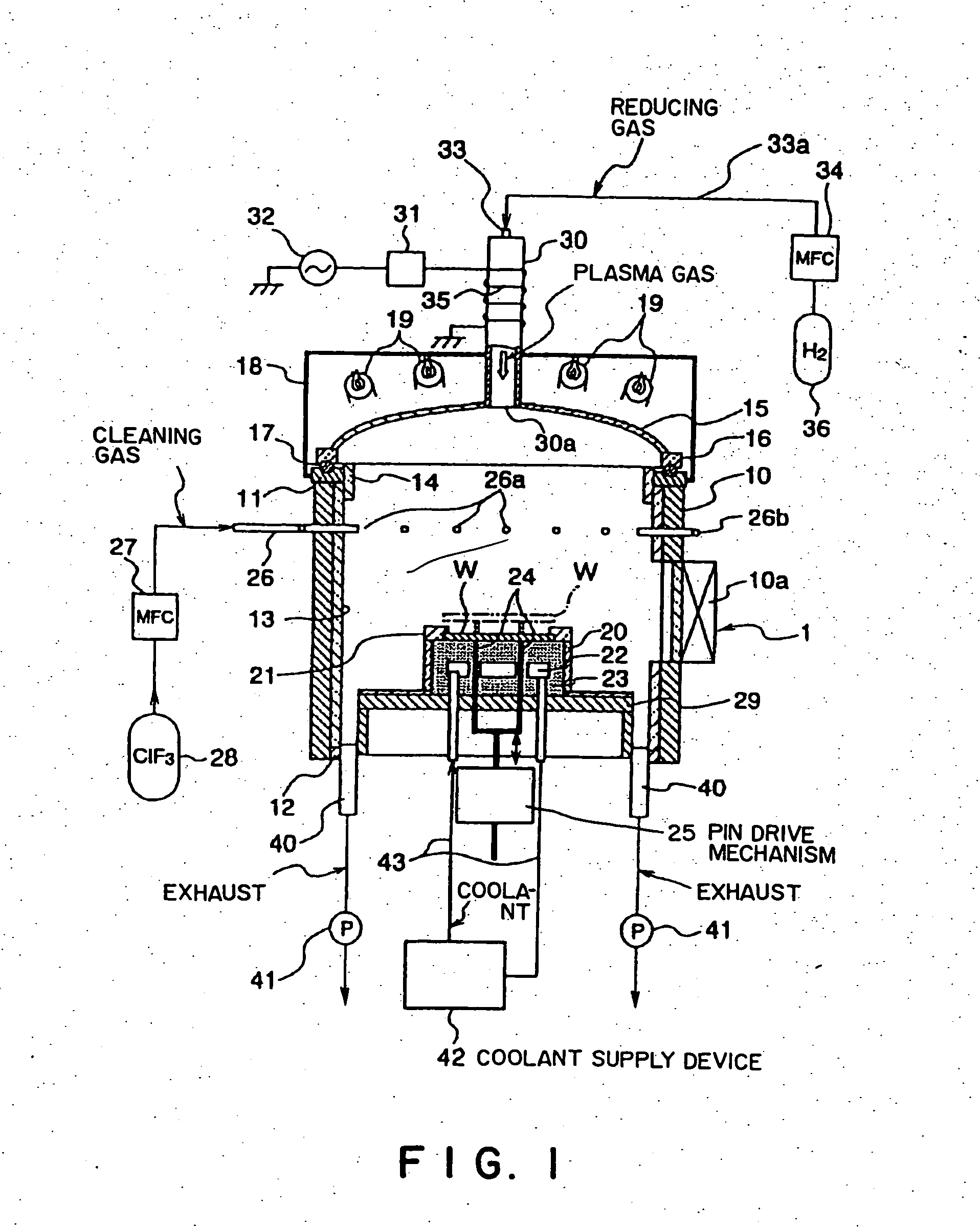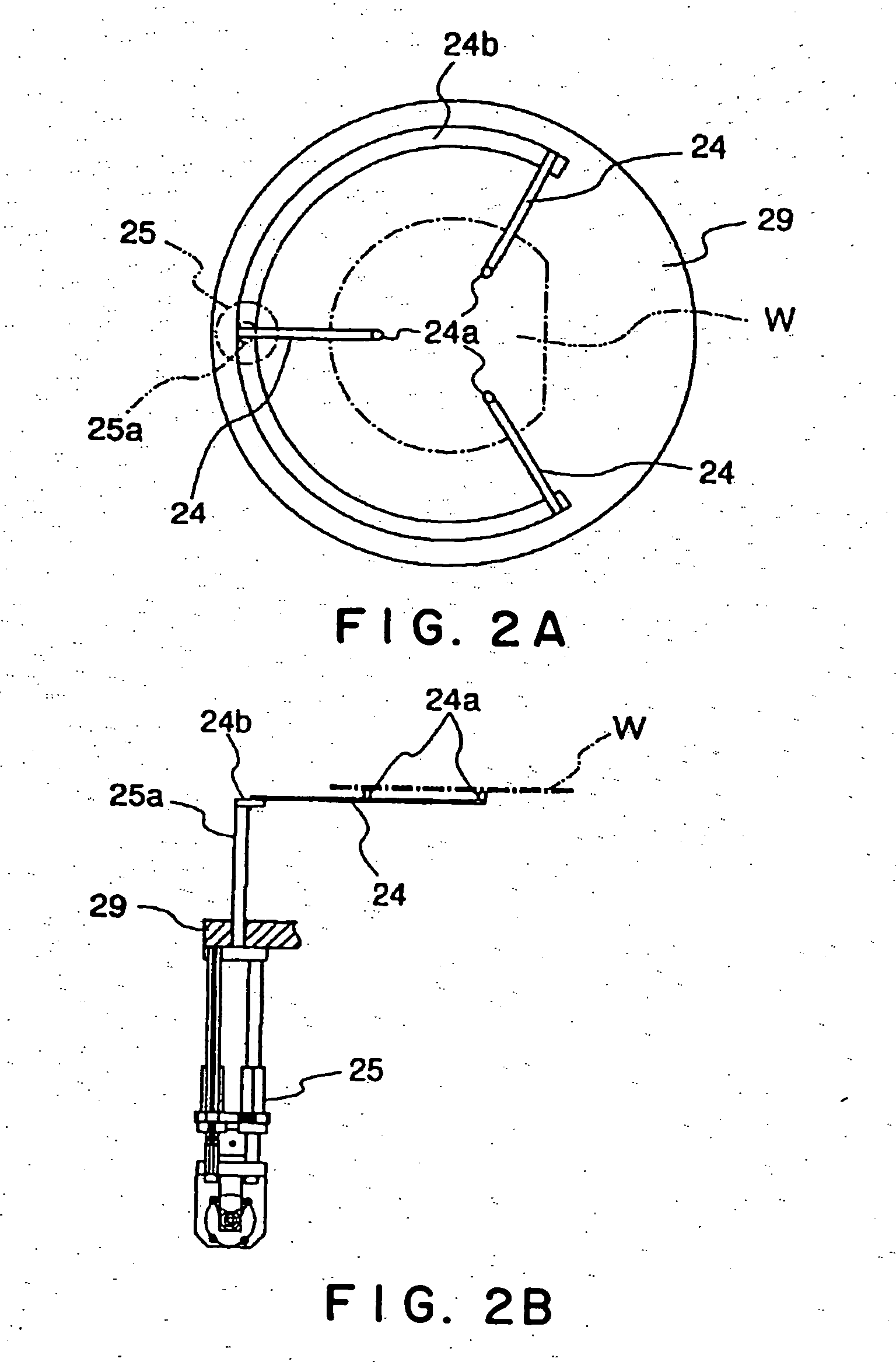Method and apparatus for surface treatment
a surface treatment and apparatus technology, applied in lighting and heating apparatus, drying machines with progressive movements, furnaces, etc., can solve the problems of insufficient impurity of liquid chemicals, unavoidable exposure of wafers to atmospheric air during transport, and inability to sufficiently impregnate minute contact holes of liquid chemicals
- Summary
- Abstract
- Description
- Claims
- Application Information
AI Technical Summary
Problems solved by technology
Method used
Image
Examples
Embodiment Construction
[0039] An embodiment of the method and the apparatus for surface treatment therefor according to the present invention is explained below in detail with reference to the attached drawings.
[0040] Configuration of the Apparatus for Surface Treatment
[0041] FIG. 1 is a diagram that shows schematic configuration of a preferred embodiment of the apparatus for surface treatment according to the present invention. The apparatus for surface treatment (cleaning device) 1 shown in FIG. 1 is used to clean surfaces of wafers W (object to be processed) having contact-holes 202 (see FIG. 8A) formed therein in a manufacturing process of semiconductor devices, for example. Removed in the cleaning procedure are oxides (hereinafter referred to as "native oxide(s)") such as native oxide films developed on a bottom surface of the contact-hole 202 or other chemical oxides having grown to a thickness around 10 to 20 Angstrom, and contaminants such as metals adhered to the bottom surface and side walls of ...
PUM
 Login to View More
Login to View More Abstract
Description
Claims
Application Information
 Login to View More
Login to View More - R&D
- Intellectual Property
- Life Sciences
- Materials
- Tech Scout
- Unparalleled Data Quality
- Higher Quality Content
- 60% Fewer Hallucinations
Browse by: Latest US Patents, China's latest patents, Technical Efficacy Thesaurus, Application Domain, Technology Topic, Popular Technical Reports.
© 2025 PatSnap. All rights reserved.Legal|Privacy policy|Modern Slavery Act Transparency Statement|Sitemap|About US| Contact US: help@patsnap.com



